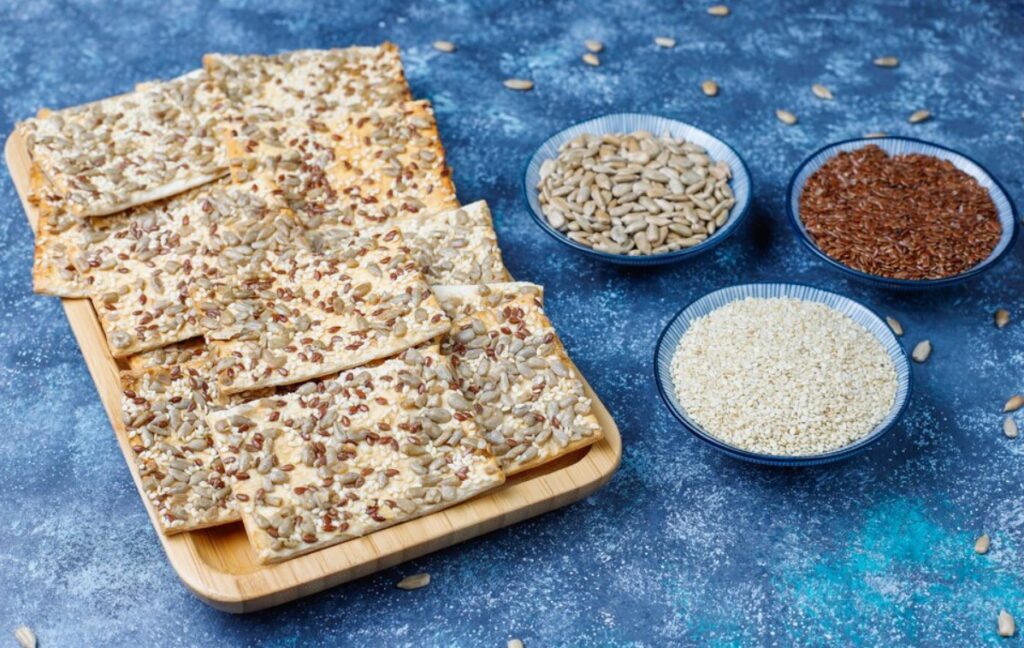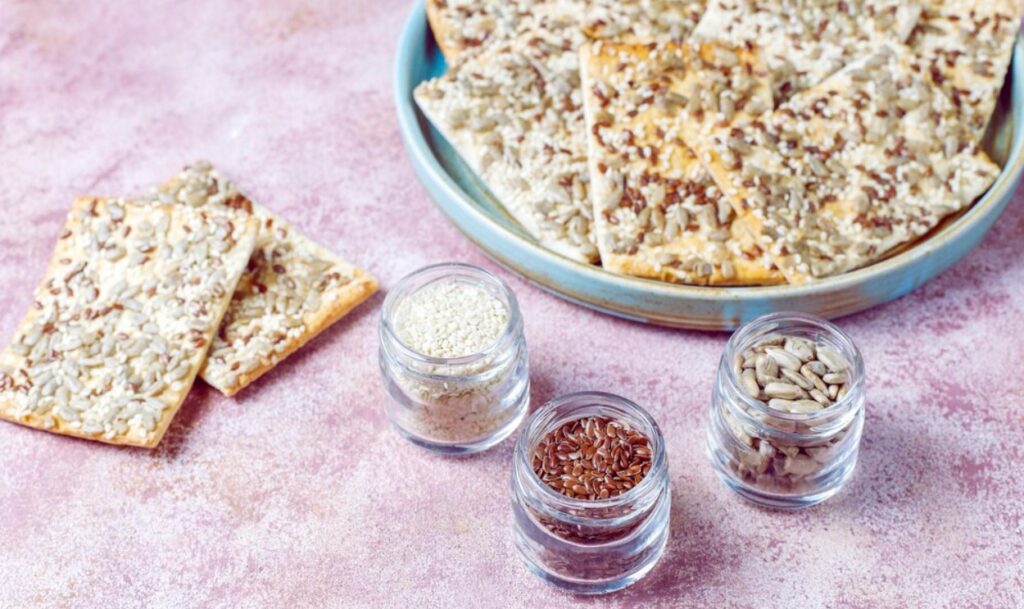Bajra, also known as pearl millet, is one of the oldest cultivated grains in the world, celebrated for its versatility and nutritional richness. Widely consumed in regions like India, Africa, and the Middle East, Bajra has been a staple in traditional diets for centuries.
From hearty rotis in Indian households to wholesome porridges in African cuisines, Bajra’s earthy flavor and health benefits have earned it a prominent place in many cultures.
In recent years, the global shift toward gluten-free diets has sparked a growing interest in ancient grains like Bajra. For individuals with gluten intolerance, celiac disease, or those simply seeking gluten-free alternatives, identifying safe and nutritious grains is essential.
This article explores whether Bajra is gluten-free and examines its suitability for people with gluten sensitivity. We’ll also dive into its health benefits, potential risks of cross-contamination, and practical ways to incorporate it into a gluten-free diet. By the end, you’ll have a complete understanding of Bajra’s role as a healthy, gluten-free grain option.
Understanding Gluten and Gluten Intolerance
Gluten is a group of proteins found in wheat, barley, rye, and their derivatives. It gives dough its elasticity, helping it rise and maintain its shape. Gluten plays a crucial role in many foods, particularly in baked goods, where it provides texture and structure. However, for some people, gluten can cause a range of health issues.
Gluten Intolerance
Gluten intolerance, also known as non-celiac gluten sensitivity (NCGS), is a condition where individuals experience symptoms like bloating, stomach cramps, and fatigue after consuming gluten-containing foods. Unlike celiac disease, gluten intolerance does not cause damage to the intestine but can still lead to discomfort and digestive issues.
Celiac Disease
Celiac disease is an autoimmune disorder triggered by the ingestion of gluten. In people with celiac disease, consuming gluten causes the body’s immune system to attack the small intestine, leading to inflammation and damage to the villi (tiny hair-like structures that absorb nutrients). This can result in malabsorption of nutrients, leading to a variety of health problems, including fatigue, anemia, and bone density loss.
Non-Celiac Gluten Sensitivity
This condition shares some symptoms with celiac disease but does not involve autoimmune damage to the intestines. People with NCGS may experience discomfort like bloating, headaches, and joint pain, but these symptoms improve once gluten is eliminated from the diet.
For individuals with gluten intolerance or celiac disease, avoiding gluten is crucial to preventing symptoms and long-term health complications.
Consuming gluten can cause inflammation, digestive distress, and in the case of celiac disease, irreversible damage to the intestines. As such, individuals with these conditions must seek out gluten-free alternatives, such as Bajra, to maintain their health.
Is Bajra Gluten-Free?
Yes, Bajra (also known as pearl millet) is naturally gluten-free. It is a type of whole grain that is widely consumed in many parts of the world, especially in regions like India and Africa.

Bajra is not derived from wheat or any other gluten-containing grains, which makes it an ideal choice for individuals following a gluten-free diet.
Scientific Backing
Bajra, like other millets, is a gluten-free grain. Studies have confirmed that Bajra does not contain gluten, which is a protein found in wheat, barley, and rye.
According to research published by the National Institutes of Health (NIH) and other credible sources, Bajra is a naturally safe alternative for people with celiac disease or non-celiac gluten sensitivity (source: NIH, Celiac Disease Foundation). Unlike wheat, which contains gluten, Bajra does not trigger the autoimmune response seen in individuals with celiac disease.
Cross-Contamination Risks
Although Bajra itself is gluten-free, there is a risk of cross-contamination during processing or packaging. Grains like Bajra are often processed in facilities that also handle gluten-containing grains. This could lead to trace amounts of gluten in the final product.
Therefore, people with severe gluten intolerance or celiac disease must be cautious about purchasing Bajra products from reputable sources. Look for products that are specifically labeled as “certified gluten-free” to ensure that there is no cross-contamination during processing.
For those with celiac disease or severe gluten sensitivity, it’s crucial to check the product packaging for gluten-free certification.
Additionally, if you’re preparing Bajra at home, be mindful of using utensils, surfaces, and equipment that haven’t been in contact with gluten-containing grains.
Bajra is inherently gluten-free, making it a great option for those with gluten sensitivities. However, individuals with severe gluten intolerance should always ensure that the product is free from cross-contamination.
Bajra’s Nutritional Benefits
Bajra (pearl millet) is a nutrient-dense grain that offers a wide range of health benefits, particularly for individuals on a gluten-free diet. It is rich in fiber, proteins, and essential minerals, making it a highly beneficial addition to any meal plan.

Nutritional Profile
Fiber: Bajra is an excellent source of dietary fiber, which aids in digestion and helps maintain bowel regularity. One cup of cooked Bajra contains about 2-3 grams of fiber, contributing to daily fiber intake.
Protein: Bajra is also high in plant-based protein, making it a great option for vegetarians and those seeking non-animal sources of protein. It provides about 5 grams of protein per cup.
Minerals: Bajra is packed with essential minerals like iron, magnesium, and phosphorus. These minerals play a crucial role in supporting bone health, boosting energy levels, and maintaining overall well-being.
Health Benefits
Aids Digestion: The high fiber content in Bajra promotes a healthy digestive system, preventing constipation and supporting the growth of beneficial gut bacteria.
Supports Heart Health: Bajra is rich in magnesium, which helps regulate blood pressure and supports heart function. The fiber content also helps lower cholesterol levels, reducing the risk of heart disease.
Weight Management: The fiber and protein content in Bajra help promote satiety, which can help control appetite and support weight management efforts.
Gluten-Free Diet: For those on a gluten-free diet, Bajra provides a nourishing alternative to gluten-containing grains like wheat, offering a balance of fiber, protein, and essential nutrients without the risk of gluten intolerance.
Incorporating Bajra into meals can significantly enhance nutritional intake, especially for those with dietary restrictions.
Scientific Evidence and Expert Opinions on Bajra’s Gluten-Free Status
Bajra (pearl millet) is recognized by health professionals and nutrition experts as a gluten-free grain, making it a viable option for individuals with celiac disease or gluten sensitivity. Several studies and expert opinions support its gluten-free nature, highlighting Bajra’s nutritional benefits and suitability for gluten-free diets.
Scientific Research
A study published in the Journal of the Science of Food and Agriculture (2017) confirmed that Bajra, like other millets, is naturally gluten-free. The study emphasized that Bajra’s lack of gluten makes it an excellent alternative to wheat and other gluten-containing grains for those with gluten intolerance or celiac disease.
Additionally, Bajra is recognized by health organizations such as the Celiac Disease Foundation and the National Institutes of Health (NIH) as a gluten-free food, further validating its safety for individuals with gluten-related disorders.
Expert Opinions
Dr. Alessio Fasano, a leading expert in celiac disease and gluten sensitivity, emphasizes the importance of safe grain alternatives for individuals with celiac disease.
According to Dr. Fasano, grains like Bajra offer a healthy, gluten-free option, as long as they are properly handled to prevent cross-contamination.
Precautionary Measures
While Bajra itself does not contain gluten, experts stress the importance of sourcing certified gluten-free Bajra to avoid potential cross-contamination during processing.
Reputable organizations like the Gluten-Free Certification Organization (GFCO) provide certifications that ensure products contain fewer than 20 parts per million (ppm) of gluten, the safety threshold for people with celiac disease.
Bajra is a gluten-free grain that is supported by scientific research and expert recommendations as a safe and nutritious option for those on a gluten-free diet, with the caveat of ensuring it is sourced from gluten-free certified facilities to avoid cross-contamination.
How to Incorporate Bajra in a Gluten-Free Diet
Bajra is a versatile grain that can be easily incorporated into a gluten-free diet in a variety of delicious and nutritious ways. Here are some practical tips and meal ideas to include Bajra in your daily meals:
1. Bajra Flour for Baking
Bajra flour is an excellent gluten-free alternative to wheat flour and can be used in baking. You can substitute Bajra flour in recipes for bread, muffins, pancakes, and cookies. It has a slightly nutty flavor, which adds a unique taste to baked goods.
For example, you can make Bajra flatbreads (commonly called “Bajra roti”) by mixing Bajra flour with water and a pinch of salt. Simply roll the dough into flat discs and cook them on a hot griddle until lightly browned.
2. Bajra Porridge
Bajra can be cooked into a creamy, comforting porridge, which is a perfect gluten-free breakfast option. To make Bajra porridge, rinse 1/4 cup of Bajra, cook it with 1 cup of water or milk, and simmer for about 15–20 minutes. You can add your favorite fruits, nuts, and sweeteners like honey or maple syrup for added flavor and nutrition.
3. Bajra-Based Snacks
Bajra can also be used to make crunchy, gluten-free snacks. Try making Bajra puffs or Bajra crackers by mixing Bajra flour with spices, water, and olive oil, then baking until crispy. These make a healthy, gluten-free alternative to traditional snacks like chips.
4. Bajra in Salads
Cooked Bajra can be tossed into salads for a hearty, filling option. Simply cook Bajra, then mix it with vegetables, herbs, and a light dressing for a nutritious salad.
5. Bajra in Soups
Add cooked Bajra to soups for extra texture and nutrition. It blends well with vegetable broths or lentil soups, offering a wholesome, gluten-free addition.
By including Bajra in a variety of meals—whether it’s baked goods, porridge, snacks, or salads—you can enjoy its many health benefits while maintaining a gluten-free diet.
Bajra for People with Celiac Disease or Gluten Sensitivity
Bajra (pearl millet) is inherently gluten-free and can be a safe and nutritious option for individuals with celiac disease or gluten sensitivity.
Since Bajra does not contain gluten, it is a suitable grain alternative for those who need to avoid gluten to manage their condition. However, there are some important precautions to consider to ensure its safety.
Safety for People with Celiac Disease
For people with celiac disease, Bajra is a good gluten-free grain choice as it does not trigger the immune response associated with gluten. It is naturally free of gluten, making it an excellent option for individuals seeking to diversify their gluten-free diet with a nutrient-rich grain.
Bajra is rich in fiber, protein, and essential minerals, offering numerous health benefits without the risk of gluten exposure.
Precautions – Cross-Contamination Risks
While Bajra itself is gluten-free, cross-contamination during processing or packaging can be a concern. Many grains, including Bajra, are often processed in facilities that handle gluten-containing grains like wheat or barley.
This can lead to trace amounts of gluten being present in Bajra products, which could potentially trigger a reaction in people with celiac disease or severe gluten sensitivity.
To reduce the risk of cross-contamination, it is essential to source Bajra that is labeled as “certified gluten-free.” Certified gluten-free Bajra undergoes rigorous testing to ensure it contains less than 20 parts per million (ppm) of gluten, which is the threshold considered safe for individuals with celiac disease.
While Bajra is naturally gluten-free and safe for most individuals with gluten sensitivity or celiac disease, careful attention to sourcing certified gluten-free products is crucial to avoid cross-contamination.
Conclusion
Bajra (pearl millet) is a naturally gluten-free grain, making it a great option for individuals with celiac disease or gluten sensitivity. Rich in fiber, protein, and essential minerals, Bajra offers numerous health benefits, including improved digestion, heart health, and weight management.
While it is safe for most people with gluten intolerance, it’s important to choose certified gluten-free Bajra to avoid cross-contamination during processing.
Incorporating Bajra into your diet can add variety and nutritional value to your meals, whether through Bajra flour in baking, porridge for breakfast, or as a base for gluten-free snacks and salads. Explore delicious gluten-free recipes with Bajra and enjoy its wholesome benefits as part of a healthy, gluten-free lifestyle!

